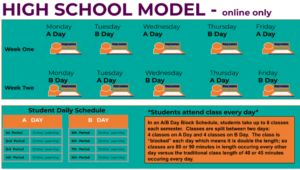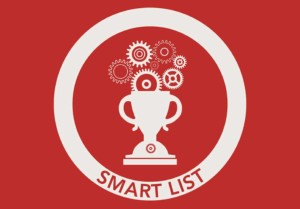The Infrastructure of Personalized Learning

In my previous posts I’ve written about my wishes for a personalized learning environment for my children, how such an environment is not yet available, and how we as a family have begun to use a wide variety of resources to essentially prototype such an environment. I use the metaphor of a “platform” – seeing education not as a single, monolithic experience to be performed upon our young people, but as a set of services that students and parents can use to meet their own, unique educational goals. This is an Internet metaphor – a platform provides a set of standard services that enable lots of different applications. A platform doesn’t have to be monolithic, but like the Internet can consist of “small pieces, loosely joined”. And like the Internet, “education as a platform” needs to serve the long tail – all the niche needs of small groups and individuals who may be separated by age, geography, and means.
If educational resources, including schools, educators, books, courses, workshops, studios, tools, web sites, videos, textbooks, digital content, learning communities, and anything else you can imagine were available “as a platform”, what would that mean to a student or a family?
In prototyping this experience we have done a number of things:
- Identify the educational goals of our family and our children.
Note that for us, learning how to “do” and “create” and “contribute” are more important than accreditation – not every family has the freedom to take such risks.
- Identify the best resources for achieving the traditional goal of being prepared for college.
Note that for us, “best” is a combination of finding resources that provide traditional content mastery in an expeditious way, finding opportunities to engage in rigorous academic work, finding the most authentic learning opportunities for mastering a particular topic, and so on. Different families will have different priorities.
- Identify opportunities to gain the non-traditional skills that public school may not support.
For us this includes authentic and meaningful work of some sort, developing collaboration and communication skills, making a meaningful contribution to a community, engaging in passion/interest based pursuit of a goal.
This prototype, this use of existing resources as though there really were an education platform out there highlights several existing constraints:
- Today, pasting together multiple resources is expensive – in time, money, and sweat equity. A platform that serves all kids will need to be affordable and has implications for how money would flow in a new, long-tail ecosystem that might not be favorable to many incumbent providers.
- Today, setting personalized goals for education in addition to choosing specific resources to fulfill those goals requires individual legal freedoms that are not available in many states.
- Today, access to the emerging educational resources that our family depends on absolutely requires unfettered access to the Internet. This means a personal, connected device for every student, not just for the affluent – 60 minutes a day in a public library for poor students is no substitute for an always-connected personal learning device; one computer shared among three siblings will not provide enough hours per day for everyone to engage in quality learning experiences; Internet access at school only is not enough – broadband that supports learning anytime, anyplace is critical for equity.
- Today, finding the resources that are a great fit for a given student is a challenging hit-or-miss proposition. It took me 5 years of concerted effort to find the right math program for my son. Discovering the right resources as they become available is a critical requirement of a platform that delivers education-as-a-service.
In order for education to exist as a platform, there will need to be an infrastructure developed that underlies it. Such an infrastructure is evolving, with a handful of reference examples in the world, but we are far from having a comprehensive infrastructure in place that can serve all kids. Infrastructure elements include:
- Legal freedoms that give parents the right to choose educational goals for their students that may differ from the 4-year high school standard;
- Policy freedoms that give state educational systems the right to offer self-paced, mastery-based, age-independent accreditation programs;
- Modularization of the educational elements of pedagogy, curriculum and assessment that allow students to gain mastery any way they choose and demonstrate mastery in any number of ways. If one learning experience doesn’t lead to mastery, a student must have the resources to readily try another;
- Freedom for educators to meet every student where they are, to mitigate deficits and guide students to authentic work rather than to inculcate rote procedural knowledge, to support and develop strengths to a great depth, and to measure success as a professional community of practice rather than with inauthentic metrics;
- Physical infrastructure that provides local access to authentic work in every community, such as science labs, sports fields, and maker spaces that serve the specific needs and preferences of that community;
- Technology infrastructure that provides every student with anytime, anyplace access to Internet-based resources; and
- Matchmaking capabilities between students and resources
Such an infrastructure would allow students to mix-and-match educational resources including physical locations, specific educators, unique programs, personally meaningful assessments, and other resources to meet their particular goals. Such an infrastructure would allow traditional educational goals and methods to thrive alongside alternative, personalized approaches. Such an infrastructure would encourage innovation and lower the barrier to positive disruption – but that’s a post for another day.







BolderTeacher
Have you considered that there are families that don't want their kids to have unlimited connectivity or even kids who dislike learning in that format? I work with 2 such kids at our school. One is parent driven and the other is a child that really doesn't hsve the attention span for any computer learning be it movies or games. As you said, personalized education takes quite a bit of sweat equity and time. I am personally creating individual based programs at our scool for 11 different students now. I have 4 supporting staff memebers, all but 1 has public school experience. They will tell you, and I agree, that the public system does not have the ability to do what we do because of time, money, etc. I applaude your search for a platform that can support this and will continue to watch your blog for updates. But, don't forget that even the best built platform has weakness and kids are unpredictable.
Marie Bjerede
Absolutely! If education were a platform it would support a wide array of parental choices, not just those that work for me and my family. I would argue that the digital learning opportunities we use would be significantly enhanced if they were available as in-person instruction. However, our willingness to use blended learning gives us access to opportunities that are FAR better than we would otherwise be able to take advantage of. But for many families the option of having fewer academic choices but instead gaining an environment that is philosophically aligned with them and their values could be the best choice. What would this look like? More charters? Waldorff-structured small studios? I would say many families prototype this experience through home-/un-/private- schooling, but I wonder how to make it affordable and available to all. Because that's the point, isn't it? Freedom, choice, and power for every kid?